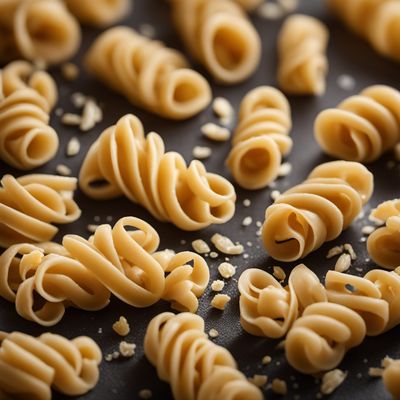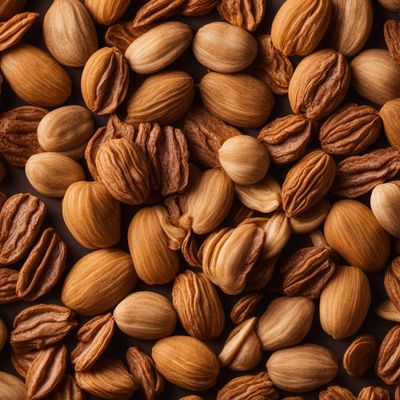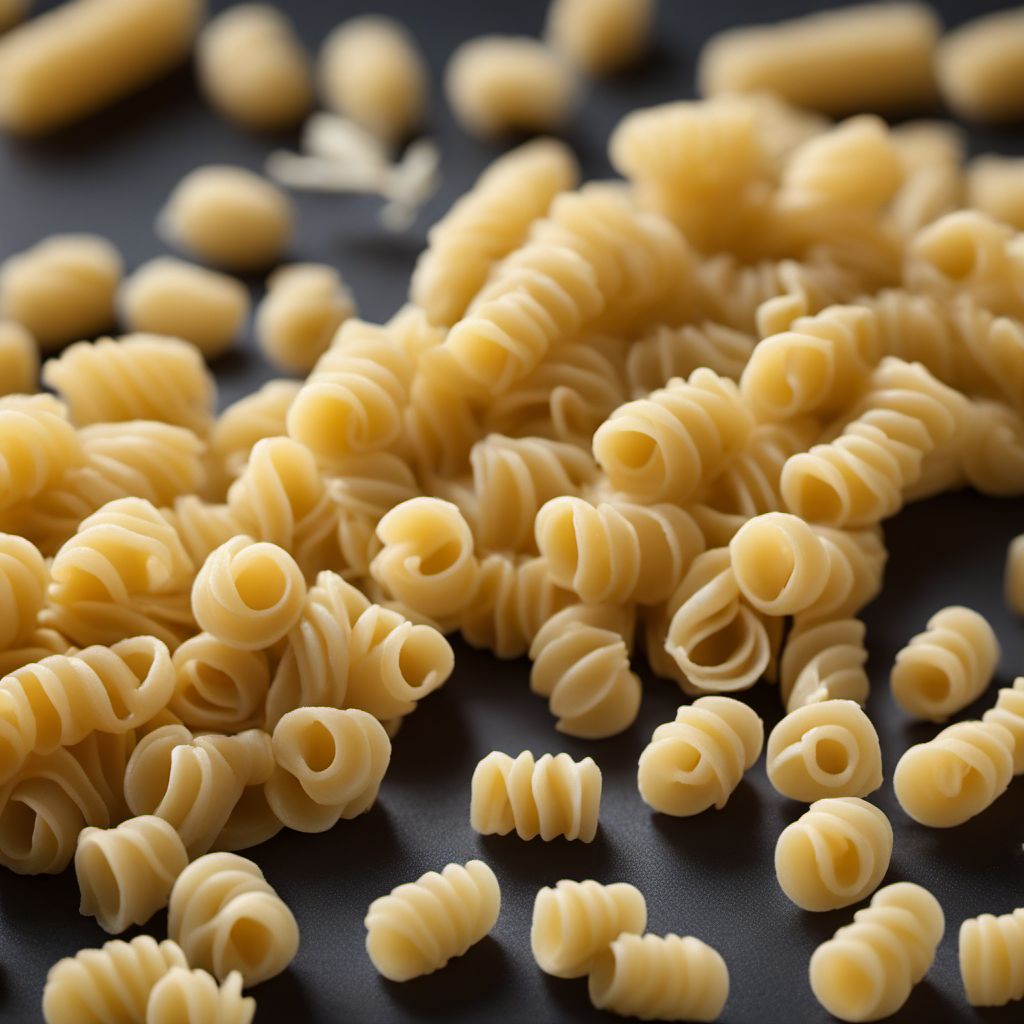
Ingredient
Pasta, plain (not stuffed), uncooked
The Versatile Staple
Plain pasta is made from a mixture of durum wheat semolina and water, resulting in a dough that is rolled out and cut into various shapes. It is typically pale yellow in color and has a smooth and firm texture when cooked al dente. The taste of plain pasta is neutral, with a subtle wheat flavor. It provides a satisfying chewiness and acts as a vehicle for other flavors in a dish. Plain pasta can be cooked in boiling water until tender and then used in a wide range of dishes, from simple pasta salads to elaborate pasta bakes or traditional Italian recipes like spaghetti carbonara or fettuccine Alfredo.
Origins and history
The origins of pasta can be traced back to ancient China, where it was made from rice flour. It then spread to the Middle East and Europe through trade routes, with different regions developing their own variations and techniques for pasta production. Pasta gained popularity in Italy during the Renaissance, and it became an integral part of Italian cuisine. Today, pasta is enjoyed worldwide and is a staple in many households. It is often associated with comfort food and is a symbol of Italian culinary heritage.
Nutritional information
Plain pasta is a good source of carbohydrates, providing energy for the body. It also contains small amounts of protein and dietary fiber. The nutritional content may vary depending on the specific type of pasta and serving size.
Allergens
Plain pasta is typically made from wheat, which contains gluten. Therefore, it is not suitable for individuals with gluten intolerance or celiac disease. There are gluten-free alternatives available, such as pasta made from rice, corn, or legumes, which can be used as substitutes for plain pasta.
How to select
When selecting plain pasta, look for brands that use high-quality durum wheat semolina. Check the ingredient list to ensure that it contains only durum wheat semolina and water, without any additives or preservatives. Opt for pasta shapes that suit your intended dish, whether it's long and thin like spaghetti, short and tubular like penne, or flat and wide like fettuccine.
Storage recommendations
To store uncooked plain pasta, keep it in a cool, dry place, away from moisture and direct sunlight. Ensure that the packaging is tightly sealed to prevent the pasta from absorbing moisture or becoming stale. Properly stored, plain pasta can have a long shelf life of up to one year.
How to produce
Producing plain pasta at home requires a pasta machine or rolling pin to roll out the dough to the desired thickness. Start by mixing durum wheat semolina and water to form a firm dough. Allow the dough to rest before rolling it out and cutting it into the desired shapes. Boil the pasta in salted water until al dente, and it is ready to be used in various recipes.
Preparation tips
To cook plain pasta, bring a large pot of salted water to a rolling boil. Add the pasta and cook according to the package instructions until al dente, which means it should still have a slight bite to it. Drain the pasta and rinse it briefly with cold water to stop the cooking process. Use the cooked pasta immediately in your desired recipe or toss it with a little olive oil to prevent sticking.
Substitutions
Plain pasta can be substituted with whole wheat pasta, gluten-free pasta, or alternative grains like quinoa or rice in recipes. The choice of substitution depends on dietary preferences or restrictions. Keep in mind that different types of pasta may have varying cooking times and textures, so adjust accordingly.
Culinary uses
Plain pasta is a versatile ingredient that can be used in a wide range of dishes. It is commonly used in classic Italian recipes like spaghetti Bolognese, lasagna, or macaroni and cheese. It can also be used in pasta salads, stir-fries, soups, or as a side dish for meat or vegetable-based mains. The possibilities are endless, limited only by one's creativity and taste preferences.
Availability
Plain pasta is widely available in grocery stores, supermarkets, and specialty food stores worldwide. It is a staple in many cuisines and can be found in various shapes and sizes, catering to different culinary traditions and preferences.
More ingredients from this category
Recipes using Pasta, plain (not stuffed), uncooked

Classic American Goulash
Hearty Beef and Pasta Delight

Vegan Sopa de Pollo y Fideos
Hearty Vegan Chicken Noodle Soup

Soulful Cacio e Pepe
Savory Soul: A Southern Twist on Cacio e Pepe

Vegetarian Pasta Carbonara
Creamy Veggie Delight: Vegetarian Pasta Carbonara

Amish Pasta Salad
Creamy Delight: Amish Pasta Salad with a Twist

Mexican Pasta Carbonara
Spicy Mexican Twist on Classic Pasta Carbonara

Puerto Rican Pasta Carbonara
Caribbean Twist Pasta Carbonara

Cuban-Style Pasta Carbonara
Havana Carbonara: A Cuban Twist on a Classic Italian Dish
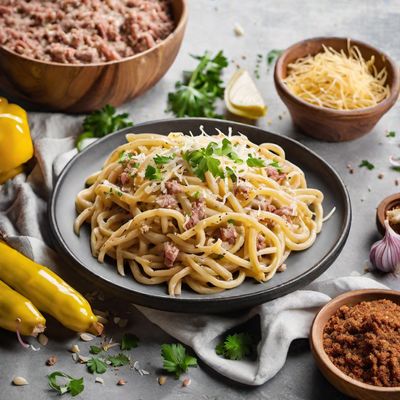
New Mexican Pasta Carbonara
Spicy Green Chile Pasta Carbonara
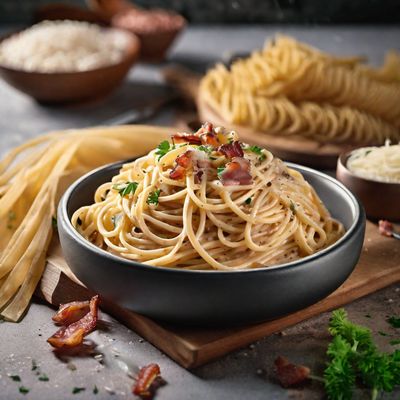
Fast Food Pasta Carbonara
Creamy Bacon Pasta Delight

Mediterranean Pasta Carbonara
Sun-Kissed Pasta Carbonara: A Mediterranean Twist on an Italian Classic

